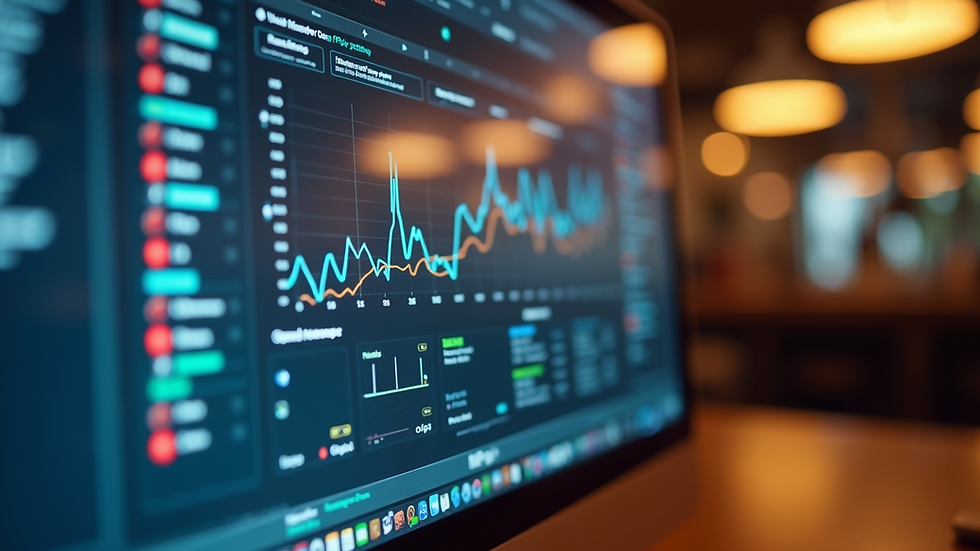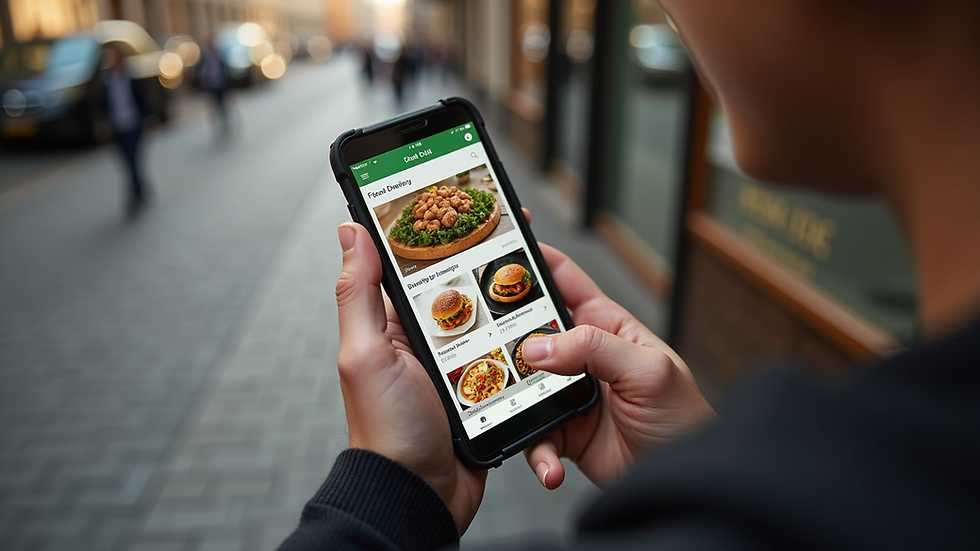Key Tools for Managing Restaurants Effectively
- Manick Chopra
- Jul 25
- 4 min read
Managing a restaurant can be a daunting task. With the fast-paced environment and the myriad of responsibilities that come with it, having the right tools can make all the difference. In this blog post, we will discuss essential restaurant tools and effective strategies for streamlining operations, improving customer experiences, and increasing profitability.
Restaurant Tools
When it comes to managing a restaurant, technology plays a significant role. The right tools can help automate processes, enhance communication, and provide valuable insights into operations. Here’s a look at some of the most effective tools for restaurant management.
1. Point of Sale (POS) Systems
A robust POS system is the backbone of any successful restaurant. It manages customer orders, payments, and inventory. Modern POS systems also provide analytics to track sales trends, employee performance, and popular menu items. Some popular POS systems include Toast, Square, and Clover.
Why It’s Essential: A POS system simplifies transactions, which improves the speed and accuracy of orders. Additionally, analytics help restaurants make informed decisions about menu pricing and stock management.

2. Restaurant Management Software
Utilizing a comprehensive restaurant management system can help centralize various aspects of your business. This includes managing reservations, inventory, employee schedules, and financials. An effective system streamlines operations and ensures that all departments communicate effectively.
Benefits: These platforms often come with mobile applications, providing access on the go, which is vital for managers who may not be in the office at all times. Features like menu customization, customer relationship management, and real-time reporting make these systems invaluable.
For more information on deciding on the right restaurant management system, consider the specific needs of your restaurant.

3. What is the ERP System for Restaurants?
Enterprise Resource Planning (ERP) systems are designed to integrate all facets of an operation, including planning, inventory, sales, marketing, finance, and HR. For restaurants, an ERP system can provide a unified platform for managing all business processes, thus ensuring efficiency and coherence.
Key Features:
Automated Financial Management: Helps in tracking expenses and revenues, forecasting trends, and preparing for audits.
Inventory Control: Monitors stock levels in real-time, helping to reduce food wastage and improve purchasing decisions.
Employee Management: Schedule shifts, track hours, and streamline payroll processes.
4. Online Ordering and Delivery Tools
The popularity of food delivery has surged, especially in recent years. Implementing effective online ordering systems can cater to this demand. Tools like Uber Eats, DoorDash, and Grubhub connect restaurants with customers, allowing them to order directly from your menu.
Considerations: Choose a system that integrates well with your existing POS for seamless order processing. Additionally, ensure that you monitor customer feedback and order accuracy closely to maintain quality service.

5. Customer Relationship Management (CRM) Tools
Building and maintaining relationships with customers is crucial in the restaurant industry. CRM tools can help gather and analyze customer data, enabling you to tailor your marketing efforts and improve customer engagement.
How CRM Tools Help:
Personalized Marketing Campaigns: Use data to create targeted promotions based on customer preferences and dining habits.
Feedback Management: Collect and analyze customer feedback for continuous improvement.
Loyalty Programs: Enhance customer retention through rewards and loyalty incentives.
6. Inventory Management Tools
Effective inventory management is critical to reducing costs and maximizing profits. Inventory management tools can help track stock levels, forecast needs, and automate reordering processes. This reduces human error and ensures that you have the right ingredients at all times.
Benefits:
Cost Efficiency: Reduces food waste and storage costs through accurate tracking.
Improved Supplier Relationships: Keeps you informed about supply issues or changes, allowing for better planning and negotiations.
7. Employee Scheduling Software
Managing employee schedules can be one of the more challenging aspects of restaurant management. Employee scheduling software simplifies this process by allowing staff to view their shifts, request time off, and swap shifts directly from their devices.
Advantages:
Increased Employee Satisfaction: Flexibility in scheduling can lead to happier staff and lower turnover rates.
Efficiency in Resource Management: Helps ensure that your restaurant is properly staffed during peak hours, enhancing customer service.
8. Accounting Software
An essential component of any business is its financial health. Using accounting software can help restaurants manage their finances, track expenses, generate reports, and handle payroll. Popular options for restaurants include QuickBooks and Xero.
Importance: Good accounting practices are essential for a restaurant’s long-term success. They provide clarity on income versus expenses, helping to identify areas for improvement.
9. Marketing Tools
In today's digital age, using marketing tools is essential for promoting your restaurant. From social media platforms to email marketing tools, a well-rounded marketing strategy can attract new customers and retain existing ones.
Recommendations:
Utilize platforms like Mailchimp for email marketing campaigns.
Engage with customers through social media platforms like Instagram and Facebook to showcase menu items and special events.
Consider using online reputation management tools to monitor and respond to customer reviews.
10. Conclusion: Embracing Technology for Success
Incorporating the right tools into your restaurant management strategy not only enhances efficiency but also improves guest experiences and cultivates customer loyalty. From POS systems to employee scheduling software, each tool plays a pivotal role in the successful operation of a restaurant.
By embracing technology and continually assessing your operational needs, you can position your restaurant for sustained success in a competitive industry. The tools you choose should align with your specific goals and foster a culture of service excellence.
Remember, the ultimate goal is to create a seamless dining experience for your customers while ensuring that your restaurant operates smoothly behind the scenes.
Finding the right tools can indeed set the foundation for effective restaurant management and long-term growth.




Comments